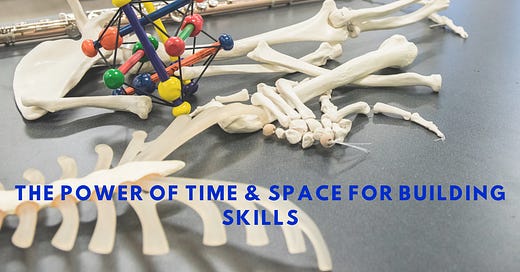3 Ways to Fine-Tune Your Sense of Movement

I love moving! I discovered this insatiable love through Body Mapping. It began as curiosity, could I actually feel the movement I was seeing in a video or observing in a skeletal model. This curiosity has not stopped growing! Trapeze, Parkour, and just about every other activity I do from mundane to exhilarating is my movement learning/sensing laboratory.
Learning to sense movement allows us to discern movement quality, fluidity, rigidity, and every nuance in between the two. Are you getting the idea that there are solutions and resolutions to challenges to be uncovered for your playing by tuning into movement? There are!
How can you tune into your movement more clearly? Here are three things you can do to begin to fine-tune your movement awareness.
#1: Practice tuning into movement away from your instrument or your craft.
For instance, delivering a fork of yummy fresh vegetable to your mouth. What movements happen from the moment you put food on your fork to when you are savoring the flavors.
How do you hold the fork? Does your grip change?
Where does your arm move to bring the fork to mouth?
Is your head moving forward as your arm moves?
If it does, can you move your arm more and allow your head to balance on the top of your spine as your arm moves?
Now that you are aware of your movement, you can play around with delivering the fork in many different ways, all the while noticing the movements and connections within the body.
#2 Take a video of yourself playing or doing anything.
Turn off the sound, throw out your inner critic, and observe what you see on the screen. Observe the movements you use. What do you see? fluidity, stiffness, rigidity, flow. Pick adjectives that make sense to you.
Watch again and pick 1 thing you would like to change. Maybe it is how you deliver your instrument or your arm. Experiment with different ways of moving each time you begin. This doesn’t have to take extra time, you can build it right into regular practice. Notice any additional changes in your experience that come from the way you deliver instrument or arms (or paintbrush, chisel, sponge, whatever you are doing) in the experience of the activity. Could be sound changes, could be enjoying the process, could also be nothing. But you have observed and consciously made decisions about your approach. This is a big step.
#3 Close your eyes to feel more & hear more.
That’s right, (unless you have a sharp object in your hands) close your eyes. Notice how your sense of touch and how your hearing is enhanced. Notice feet on the ground, fingers on keys, breathing. Do you sense any places within where you could work less? Experiment with changing the effort and see what effects it has on what you are doing. See if you can find the “just right” amount of effort.
When we enter into the music-making process we have choices about how we do it and can shift in any moment.
Be curious…



